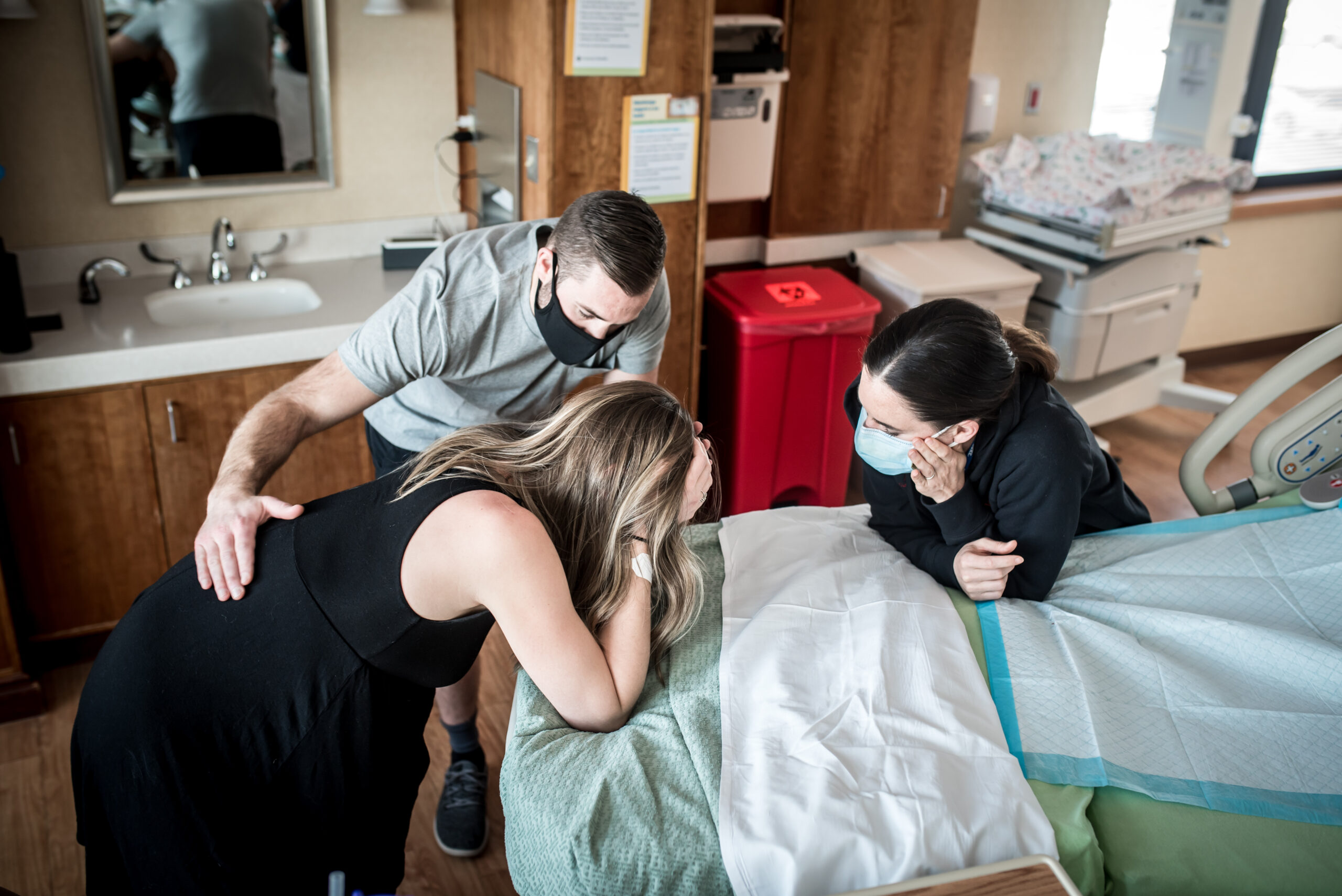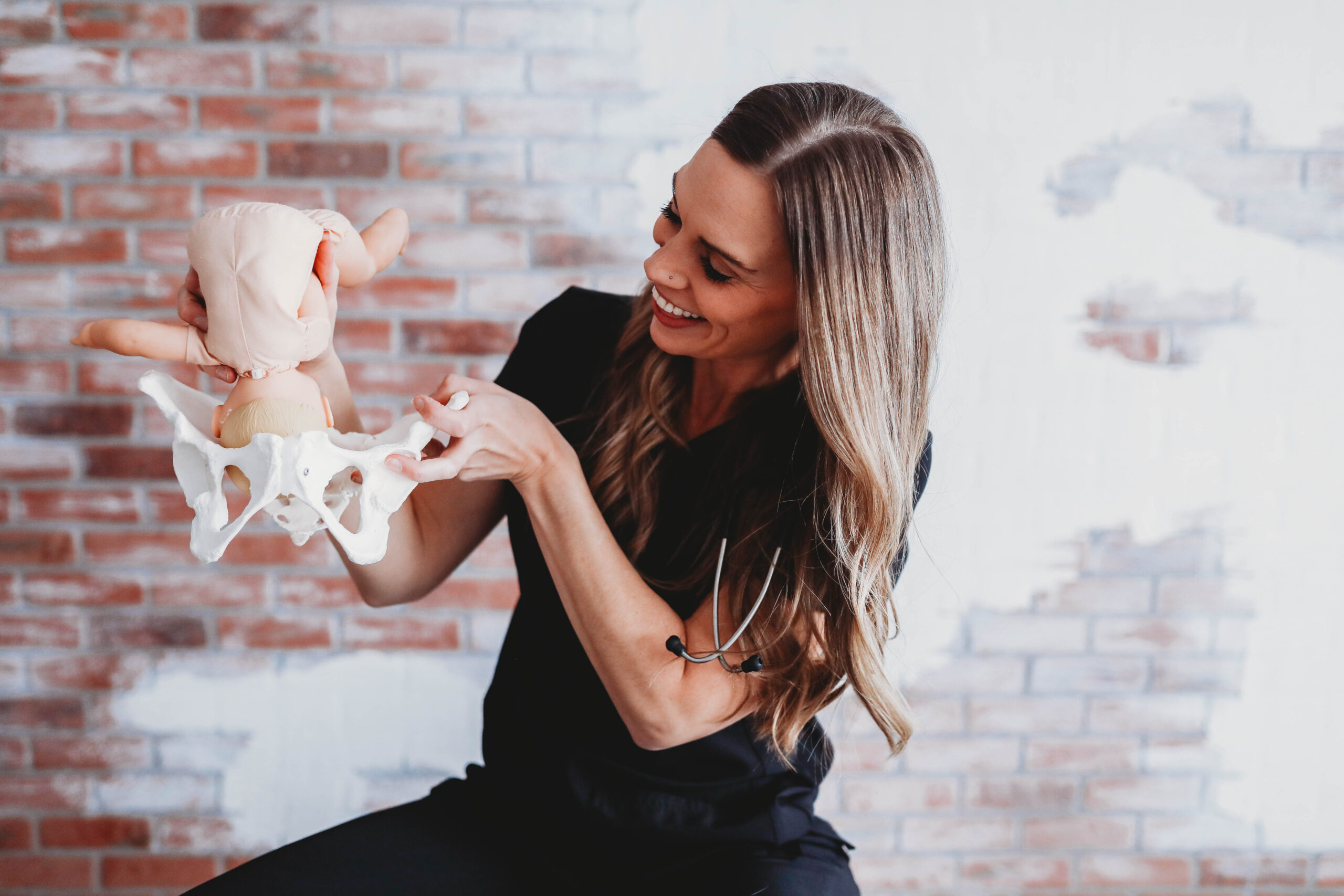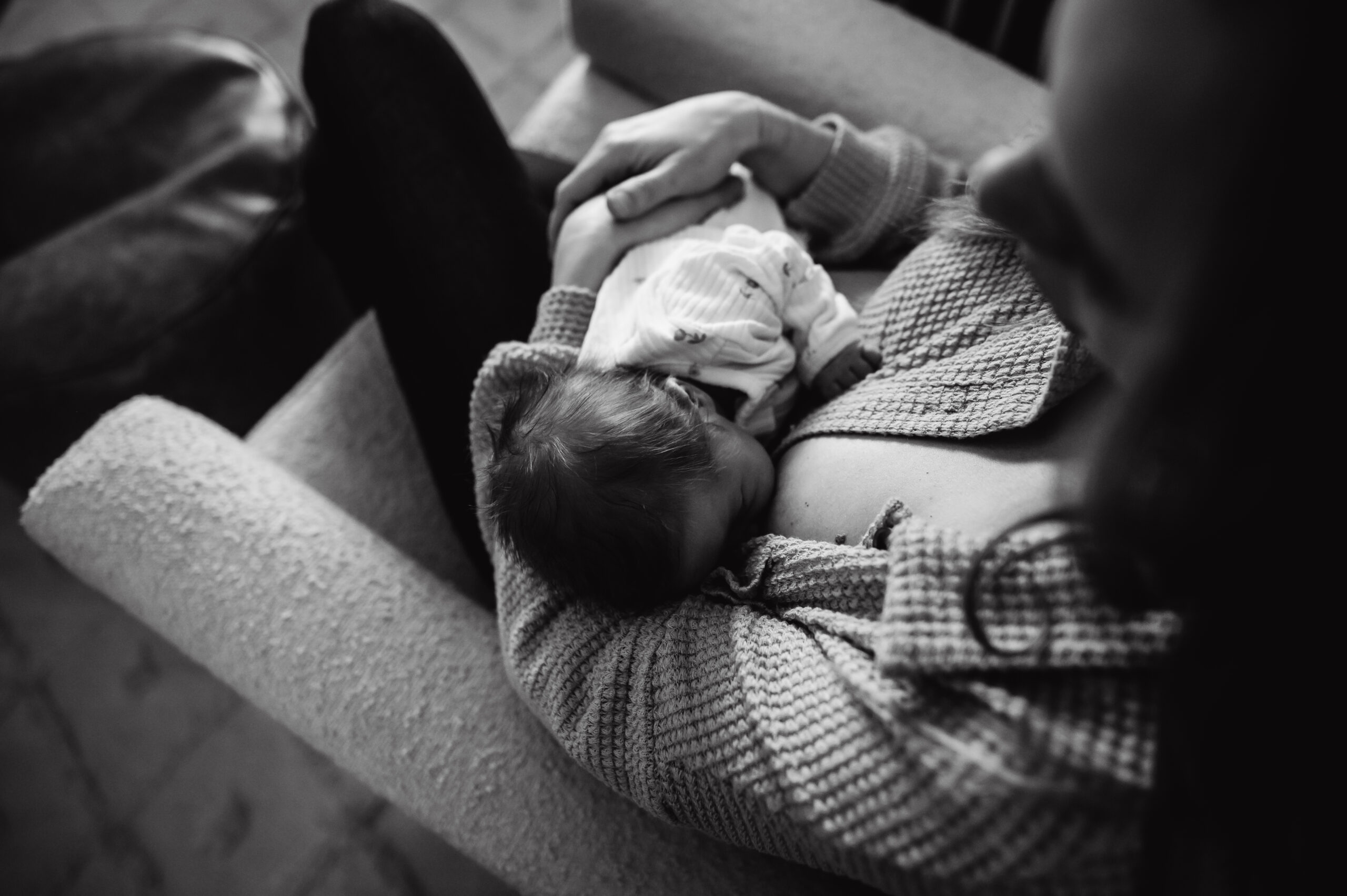Hearing some horror stories from friends about their back labor? Let me help you out a bit.
Back labor is appropriately named, and is exactly what it sounds like: labor pains in your back. It might be caused by baby’s position as they drop, and it might be caused by something else. What we do know is that it’s super uncomfortable! We’re discussing back labor (and what you can try to get some relief!) below.
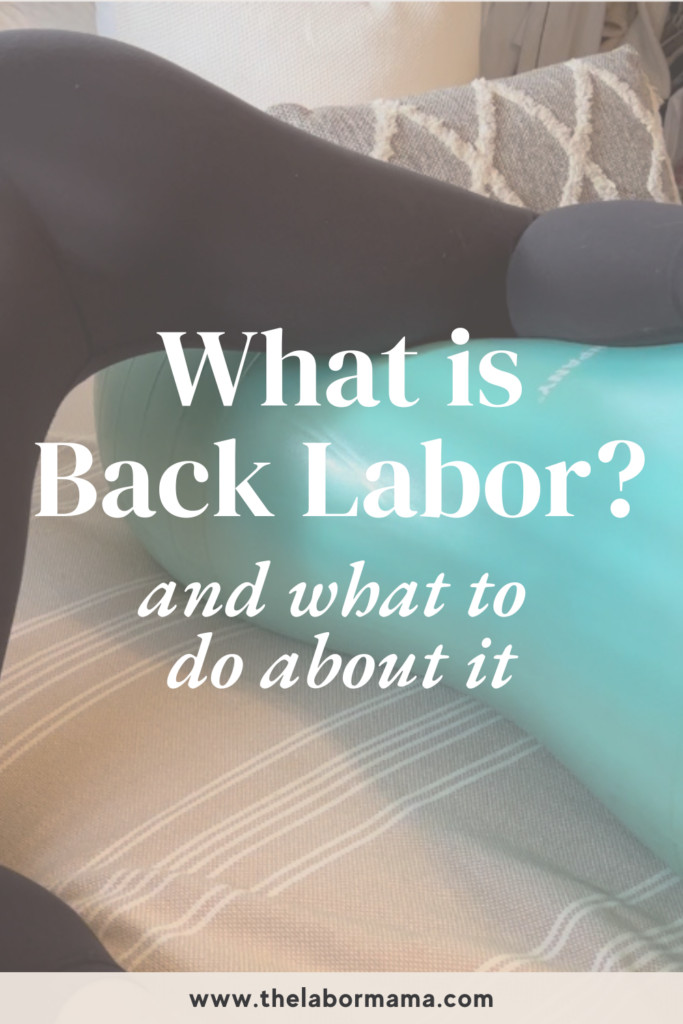
Who is The Labor Mama and Why Am I Here?
Hey friend! I’m Lo – also known around here and social media as The Labor Mama. I’ve spent my nursing career in labor, delivery, and postpartum, have birthed 3 of my own babies, have labored thousands of mamas at the bedside, have taught hundreds of students online, and have even delivered a few speedy little babies with my bare hands (oops).
Here at TLM, I offer online birth classes to empower you the way everyone should be. The education + support I offer gives you experience, evidence, and empathy; you’re getting all of my years of “clinical” RN knowledge, beautifully combined with my real experiences as a mama and a nurse. These are not your hospital birth classes (those won’t do it, I promise), and honestly, birth doesn’t follow a textbook or protocol anyway – you need to know so much more than that.
If you want to connect with me further, head to Instagram. There are hundreds of thousands of us over there learning together daily.
So what is back labor, exactly?
Typically, contraction pain or “typical” labor is felt in the front of the body, kind of in the place where many feel period pains (aka, deep in your pubic area). That pain comes and goes as contractions begin, build, and then slowly recedes. Back labor is when you feel contraction pain all across your lower back, and for some (the unlucky ones?), in the front, across the back, and maybe in the hips too. Sometimes, it is also associated with “coupling” or double peaking contractions. These terms refer to back-to-back contractions with no break between them.


What causes back labor?
The position of the baby is the most common cause of back labor – specifically, an occiput posterior, or OP baby. You may hear the birth staff also call an OP baby a “sunny side up” baby.
A baby in the OP position is “back to back” with you. This means their head (their occiput) is along YOUR posterior (your back). Layman’s terms? OP means that the back of their head is pushing hard on your spine and then your tailbone as they progress through the birth canal.


Back labor can also be related to your anatomy. Shorter stature, scoliosis, or the tilt of your pelvis can all change the angle that the baby enters into your pelvis – making back labor possible (for anyone).
What does it feel like?
Even though every pregnancy (even with the same mama and different babies!) and body is different, a lot of people mention the following when it comes to back labor:
- No relief between contractions
- Back spasms
- More intense and difficult-to-deal-with pains
Back labor can also lead to longer labors or longer pushing times, particularly when the cause is an OP baby. Because that babe is kind of coming down “backwards,” it can take a little longer to get them under the pubic bone and out of that birth canal!
Can I still deliver vaginally with back labor?
Yeeeeeeees. I’ve seen hundreds of babies born via back labor, whether or not they are OP! Even though we all know nothing is “guaranteed” in birthing a baby, dealing with back labor does not bar you from having a vaginal delivery!
The text below comes directly from one of my courses (take a peek at those here!) – consider it a little preview gift from me to you. If you find it helpful, I’d love for you to consider taking the course! It’s got lots of good info like this to help you feel empowered and prepared for birth and baby.
“Ok, let’s jump to back labor, as this often coincides with coupling and OP babies. Back labor is exactly what it is called – instead of feeling labor contractions in your lower uterine area, you actually feel it hard – in your back. This pain is often felt intensely in the hips as well. Unfortunately, back labor also has the tendency to be uncomfortable even between contractions – where your back just aches no matter what you do.
I have to be honest with you – I’ve never experienced back labor, not to the degree many complain of. But anecdotally, most who have persistently experienced both types of contractions will tell you that back labor is just flat out hard.”
What to do about back labor?
Ultimately, anyone can experience back labor or an OP baby – and the coinciding labor challenges that may come along with that! So let’s discuss some of the ways you can turn a baby in labor – and hopefully, alleviate those funky contraction patterns and that back pain.
- Do what you can to encourage optimal positioning BEFORE labor begins. I have an Optimal Fetal Positioning for Birth lesson in Your Body, Your Birth you should definitely watch. This and this on Instagram can help too! If you’re free to safely do so, start incorporating some of those rhythms now.
- Consider the Miles Circuit, both before labor and in labor. This can absolutely be done during labor – particularly early labor. I go over the Miles Circuit fully in the Physical Activity lesson in Your Body, Your Birth and this might help too!
- Hands and Knees positions: Any position that has you in your hands and knees can use gravity to get baby off of your back AND encourage them to rotate to OA. If you need to, you can drape over a birth ball too. This position can also be great if you are using a TENS unit, counter pressure, or a warming pad on the lower back. Peek here for more labor management tools you can consider!

- Rebozo: If you have someone who can, utilize the rebozo technique. Lifting the belly up out of the pelvis can also help alleviate some of that back pressure and pain.

- Fire Hydrant position: You can easily move into this position if you are already incorporating lots of hands and knees. This picture below shows how you can set yourself up.

- Counter Pressure or Hip Squeezes: Since back labor commonly coincides with hip pain, either of these techniques may help alleviate some of that pressure.

7. Have your partner help: Sit in a chair as comfortably as you can, and have your partner put their hands on your kneecaps and press backward. This will press your lower back into the chair and hopefully alleviate some of the pressure you’re feeling–it won’t TURN the baby per se, but we’ll take a moment of relief where we can get it, right?!
8. It might feel a little silly, but pull your shoulders back and push your chin to be out over your hips and do some speed walking. Spinning Babies recommends this (and other techniques) that could encourage an OP baby to do a little needed twisting of their own!
A final encouragement here that babies can turn at ANY time in the labor process and you always want to be encouraging them towards optimal fetal positioning. Regardless of the reason for your back labor, incorporate these practices (and movement) throughout your labor, including if or when you choose to get an epidural!
The bottom line on back labor
Back labor is painful and different from the “traditional” labor pains you might be familiar with, but it isn’t something you have to fear or think it prevents you from having the birth you want. I hope this type of deep dive knowledge empowers you in your own body and shows you that you can overcome it! And I hope you know that your baby is going to be born to the right mama (you!) – in whatever way they decide to show up.
I can’t wait to hear more about YOUR experiences with labor – give it all to me. The good, the bad, and the ugly. Any back labor? xx – Lo
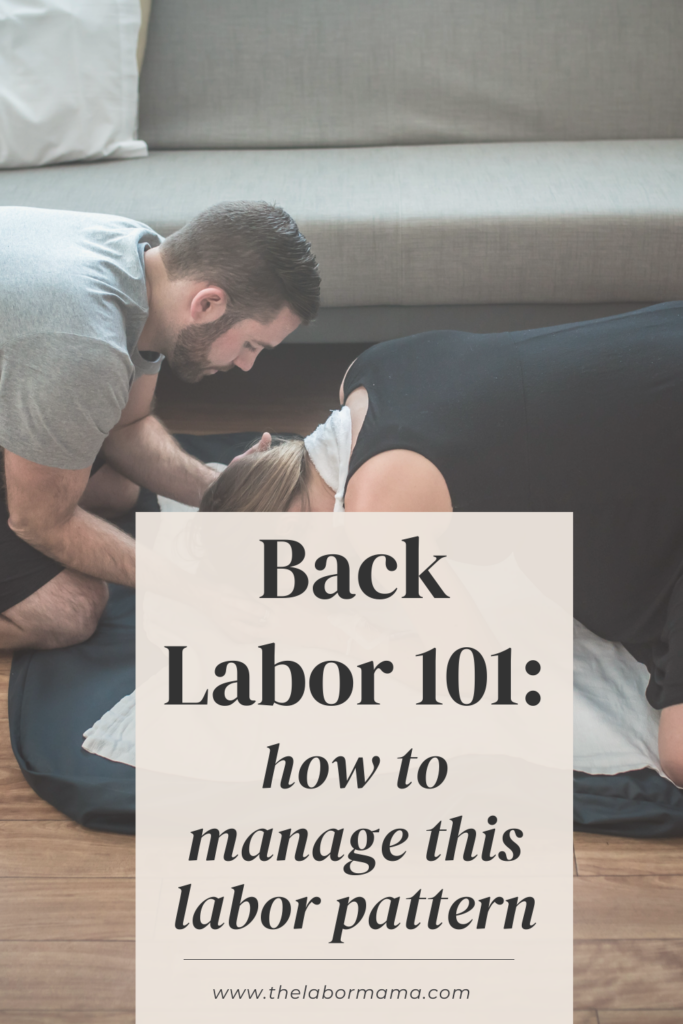
More resources (and freebies!) for you to take a peek at are below, and don’t forget about my online birthing class options here:
